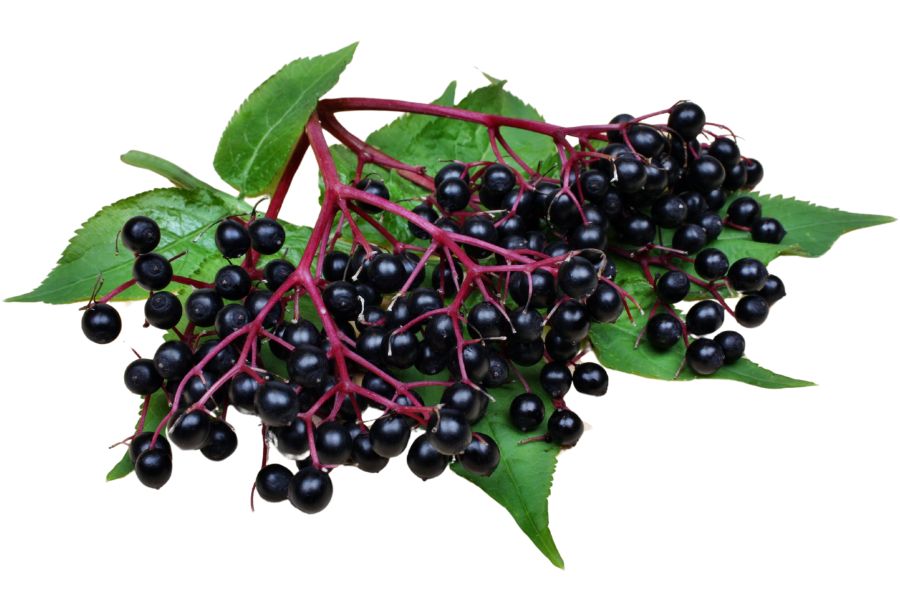Valuable forageable plants grow across Florida in environments ranging from sandy soil to shaded hammocks. Some of these plants are so common that they are often overlooked.
Chickasaw plum produces small tart fruits that are excellent for preserves. American lotus has edible seeds and roots used in traditional cooking.
Some plants, like greenbrier, offer edible shoots that are best harvested young. Others provide fruit or roots that have been used for generations.
Florida has many more edible plants worth learning about beyond the ones people usually mention. Knowing how to recognize the right ones can make a day in the field both rewarding and productive.
What We Cover In This Article:
- What Makes Foreageables Valuable
- Foraging Mistakes That Cost You Big Bucks
- The Most Valuable Forageables in the State
- Where to Find Valuable Forageables in the State
- When to Forage for Maximum Value
- The extensive local experience and understanding of our team
- Input from multiple local foragers and foraging groups
- The accessibility of the various locations
- Safety and potential hazards when collecting
- Private and public locations
- A desire to include locations for both experienced foragers and those who are just starting out
Using these weights we think we’ve put together the best list out there for just about any forager to be successful!
A Quick Reminder
Before we get into the specifics about where and how to find these plants and mushrooms, we want to be clear that before ingesting any wild plant or mushroom, it should be identified with 100% certainty as edible by someone qualified and experienced in mushroom and plant identification, such as a professional mycologist or an expert forager. Misidentification can lead to serious illness or death.
All plants and mushrooms have the potential to cause severe adverse reactions in certain individuals, even death. If you are consuming wild foragables, it is crucial to cook them thoroughly and properly and only eat a small portion to test for personal tolerance. Some people may have allergies or sensitivities to specific mushrooms and plants, even if they are considered safe for others.
The information provided in this article is for general informational and educational purposes only. Foraging involves inherent risks.
What Makes Foreageables Valuable
Some wild plants, mushrooms, and natural ingredients can be surprisingly valuable. Whether you’re selling them or using them at home, their worth often comes down to a few key things:
The Scarcer the Plant, the Higher the Demand
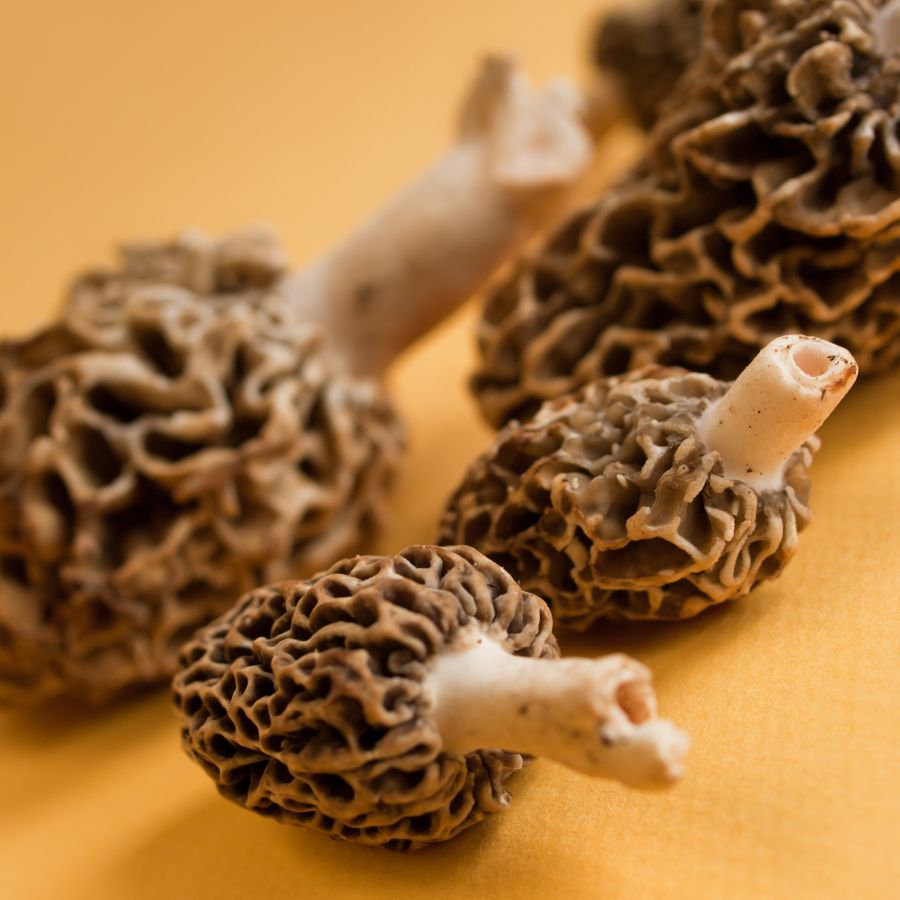
Some valuable forageables only show up for a short time each year, grow in hard-to-reach areas, or are very difficult to cultivate. That kind of rarity makes them harder to find and more expensive to buy.
Morels, truffles, and ramps are all good examples of this. They’re popular, but limited access and short growing seasons mean people are often willing to pay more.
A good seasonal foods guide can help you keep track of when high-value items appear.
High-End Dishes Boost the Value of Ingredients
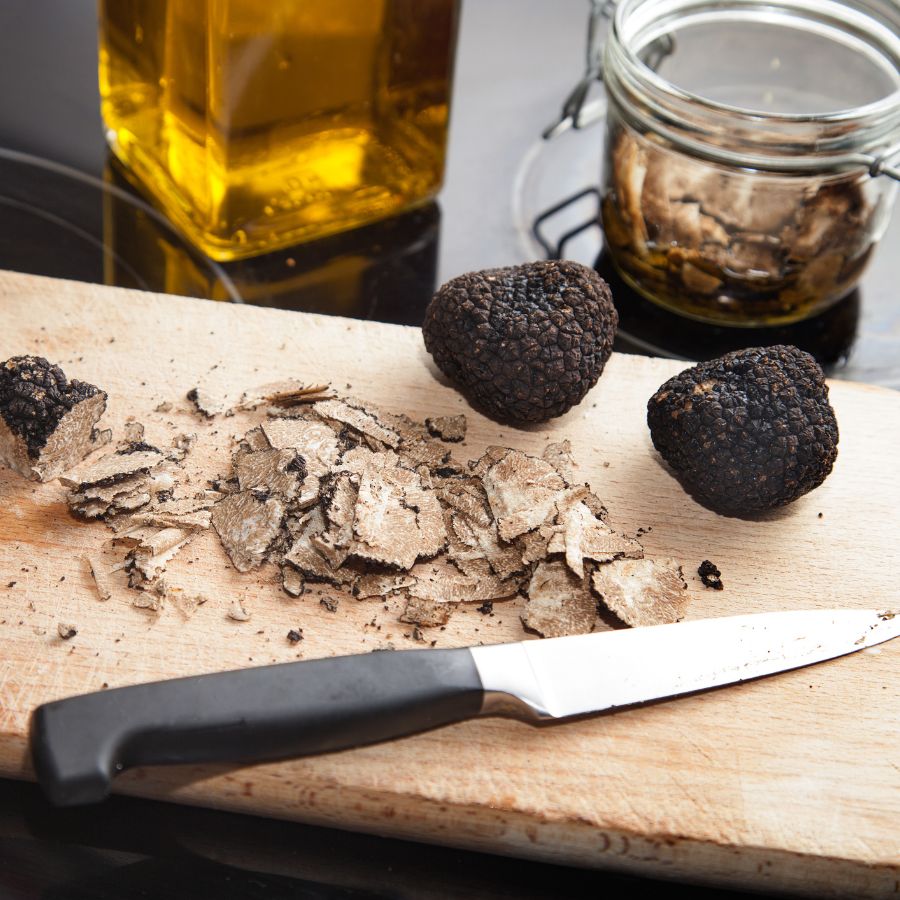
Wild ingredients that are hard to find in stores often catch the attention of chefs and home cooks. When something unique adds flavor or flair to a dish, it quickly becomes more valuable.
Truffles, wild leeks, and edible flowers are prized for how they taste and look on a plate. As more people try to include them in special meals, the demand—and the price—tends to rise.
You’ll find many of these among easy-to-identify wild mushrooms or herbs featured in fine dining.
Medicinal and Practical Uses Drive Forageable Prices Up
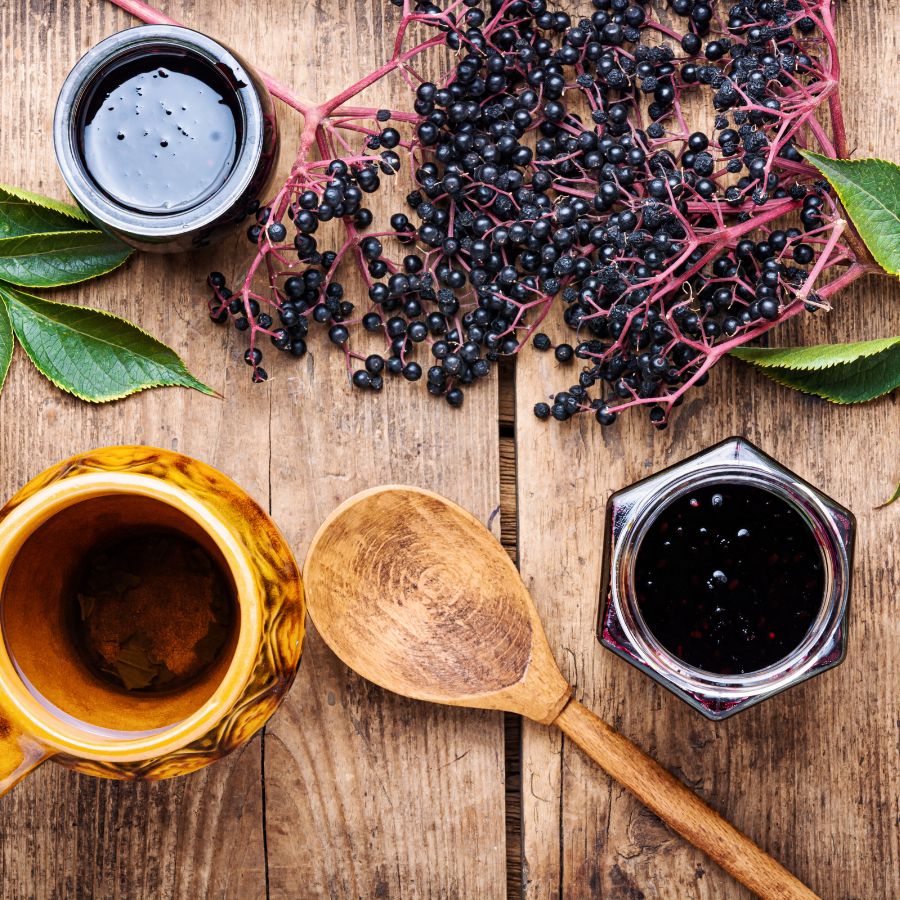
Plants like ginseng, goldenseal, and elderberries are often used in teas, tinctures, and home remedies. Their value comes from how they support wellness and are used repeatedly over time.
These plants are not just ingredients for cooking. Because people turn to them for ongoing use, the demand stays steady and the price stays high.
The More Work It Takes to Harvest, the More It’s Worth
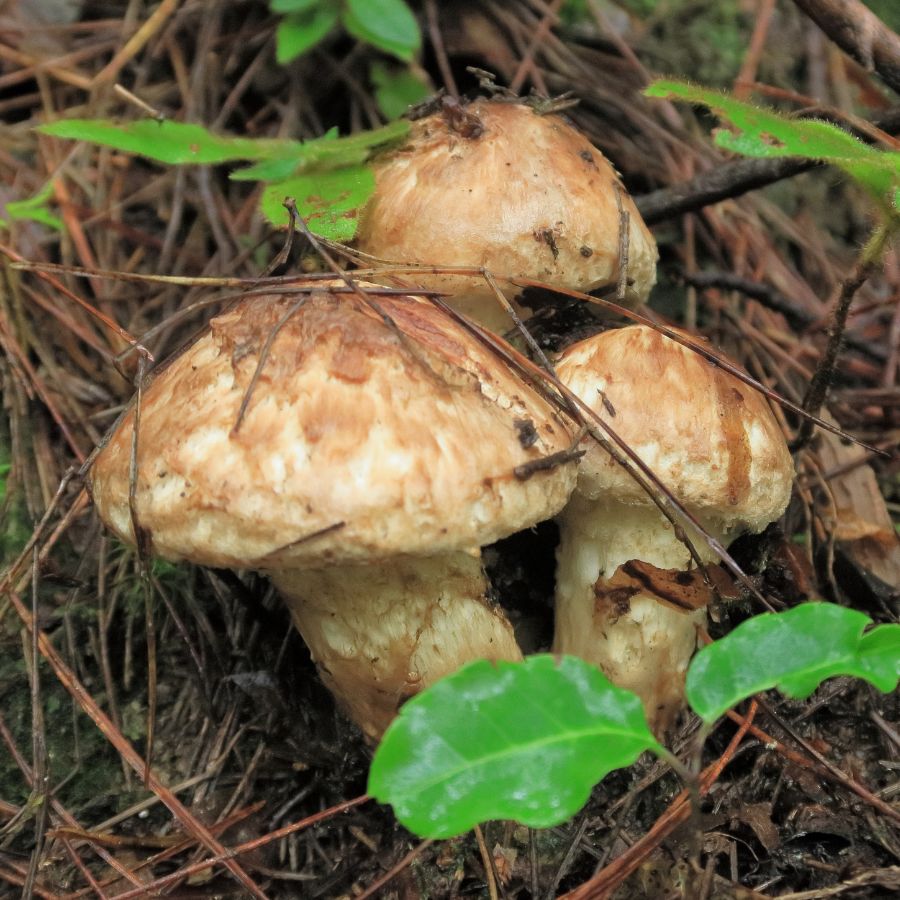
Forageables that are hard to reach or tricky to harvest often end up being more valuable. Some grow in dense forests, need careful digging, or have to be cleaned and prepared before use.
Matsutake mushrooms are a good example, because they grow in specific forest conditions and are hard to spot under layers of leaf litter. Wild ginger and black walnuts, meanwhile, both require extra steps for cleaning and preparation before they can be used or sold.
All of that takes time, effort, and experience. When something takes real work to gather safely, buyers are usually willing to pay more for it.
Foods That Keep Well Are More Valuable to Buyers
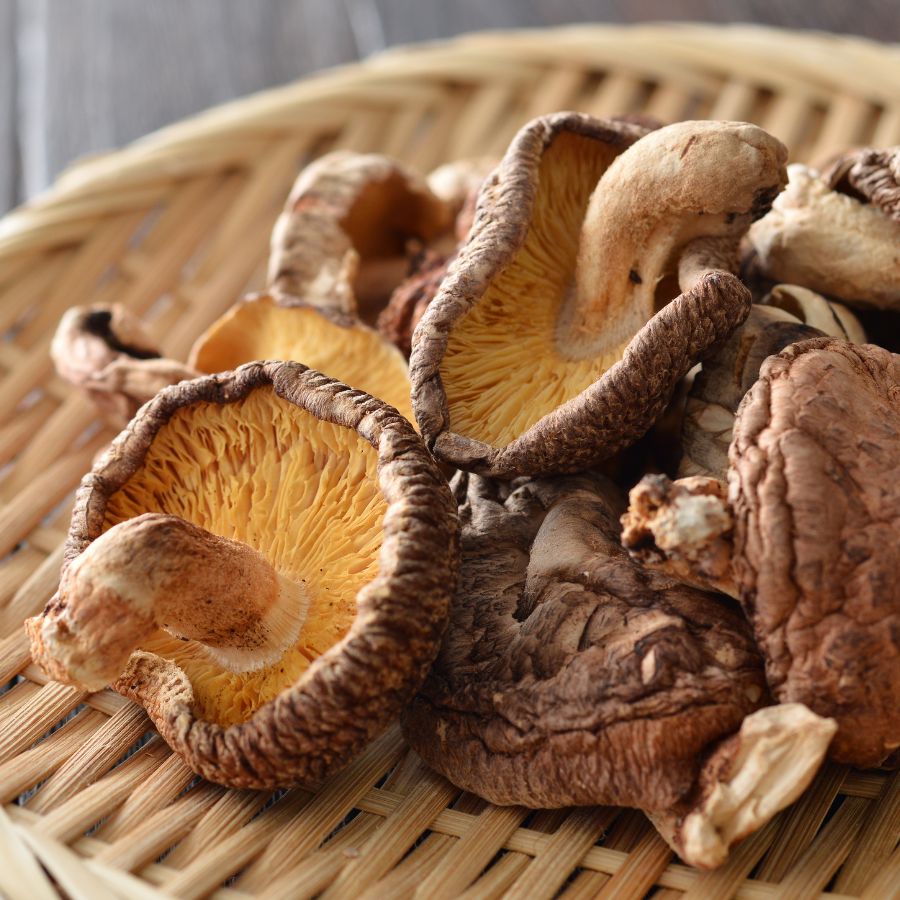
Some forageables, like dried morels or elderberries, can be stored for months without losing their value. These longer-lasting items are easier to sell and often bring in more money over time.
Others, like wild greens or edible flowers, have a short shelf life and need to be used quickly. Many easy-to-identify wild greens and herbs are best when fresh, but can be dried or preserved to extend their usefulness.
Before you head out
Before embarking on any foraging activities, it is essential to understand and follow local laws and guidelines. Always confirm that you have permission to access any land and obtain permission from landowners if you are foraging on private property. Trespassing or foraging without permission is illegal and disrespectful.
For public lands, familiarize yourself with the foraging regulations, as some areas may restrict or prohibit the collection of mushrooms or other wild foods. These regulations and laws are frequently changing so always verify them before heading out to hunt. What we have listed below may be out of date and inaccurate as a result.
Foraging Mistakes That Cost You Big Bucks
When you’re foraging for high-value plants, mushrooms, or other wild ingredients, every decision matters. Whether you’re selling at a farmers market or stocking your own pantry, simple mistakes can make your harvest less valuable or even completely worthless.
Harvesting at the Wrong Time
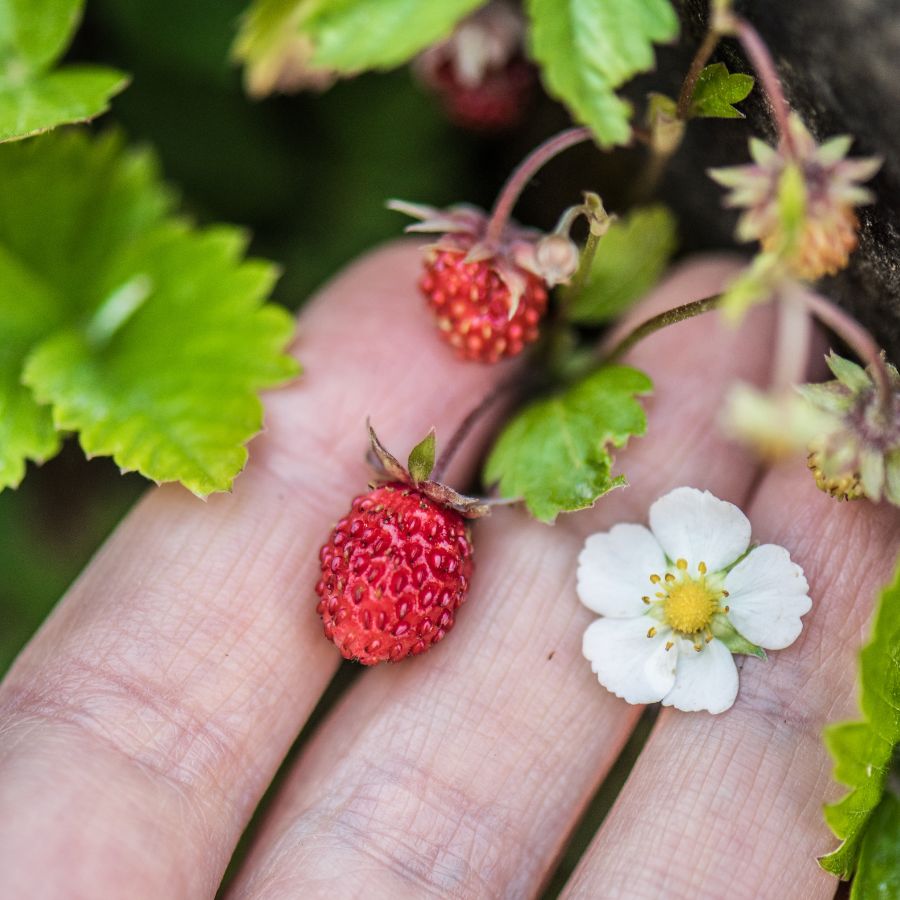
Harvesting at the wrong time can turn a valuable find into something no one wants. Plants and mushrooms have a short window when they’re at their best, and missing it means losing quality.
Morels, for example, shrink and dry out quickly once they mature, which lowers their weight and price. Overripe berries bruise in the basket and spoil fast, making them hard to store or sell.
Improper Handling After Harvest
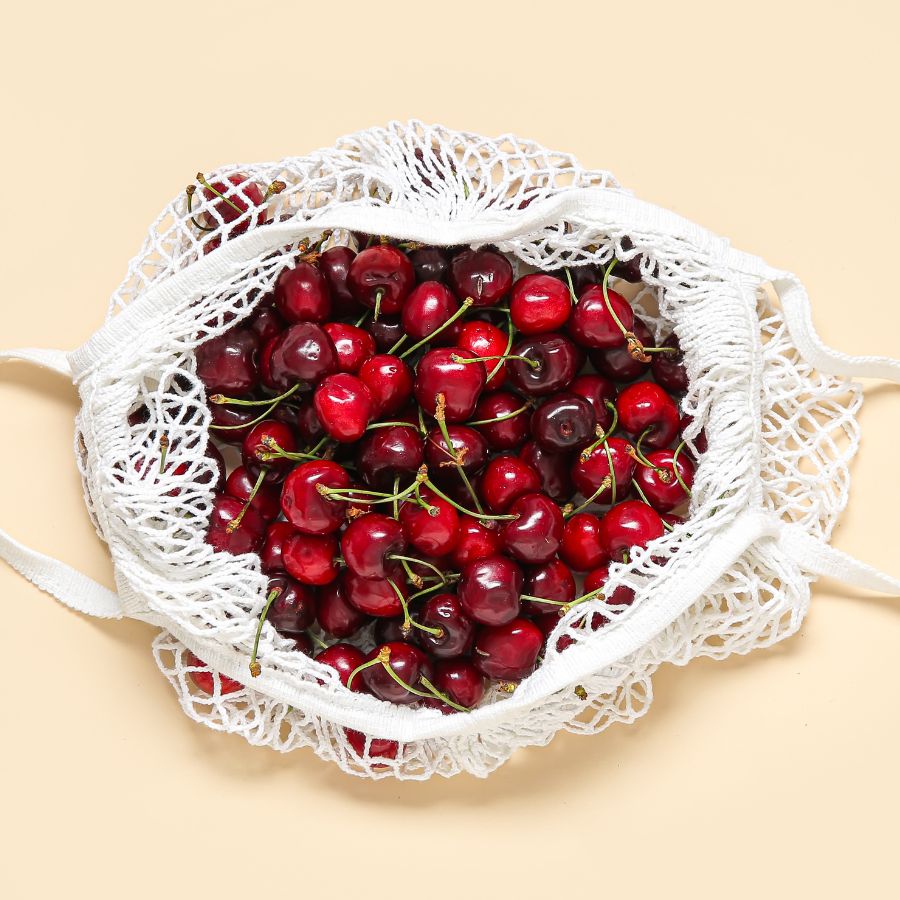
Rough handling can ruin even the most valuable forageables. Crushed mushrooms, wilted greens, and dirty roots lose both their appeal and their price.
Use baskets or mesh bags to keep things from getting smashed and let air circulate. Keeping everything cool and clean helps your harvest stay fresh and look better for longer.
This is especially important for delicate items like wild roots and tubers that need to stay clean and intact.
Skipping Processing Steps
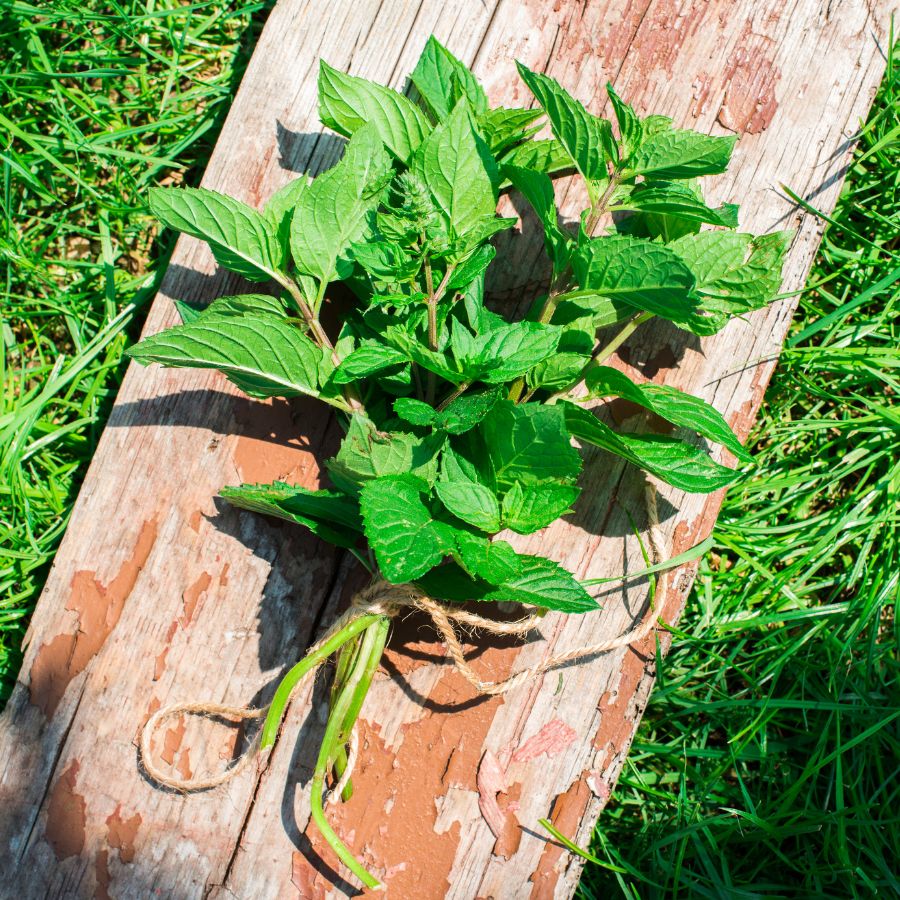
Skipping basic processing steps can cost you money. A raw harvest may look messy, spoil faster, or be harder to use.
For example, chaga is much more valuable when dried and cut properly. Herbs like wild mint or nettle often sell better when bundled neatly or partially dried. If you skip these steps, you may end up with something that looks unappealing or spoils quickly.
Collecting from the Wrong Area
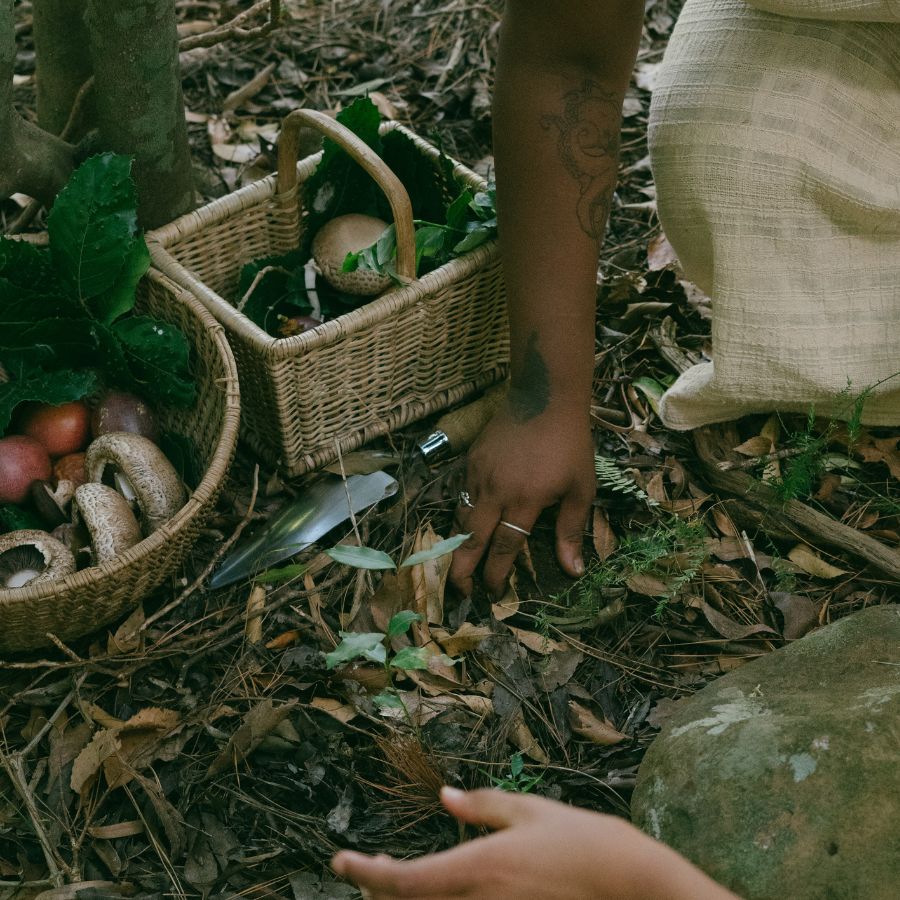
Harvesting in the wrong place can ruin a good find. Plants and mushrooms pulled from roadsides or polluted ground may be unsafe, no matter how fresh they look.
Buyers want to know their food comes from clean, responsible sources. If a spot is known for overharvesting or damage, it can make the whole batch less appealing.
These suburbia foraging tips can help you find overlooked spots that are surprisingly safe and productive.
Not Knowing the Market
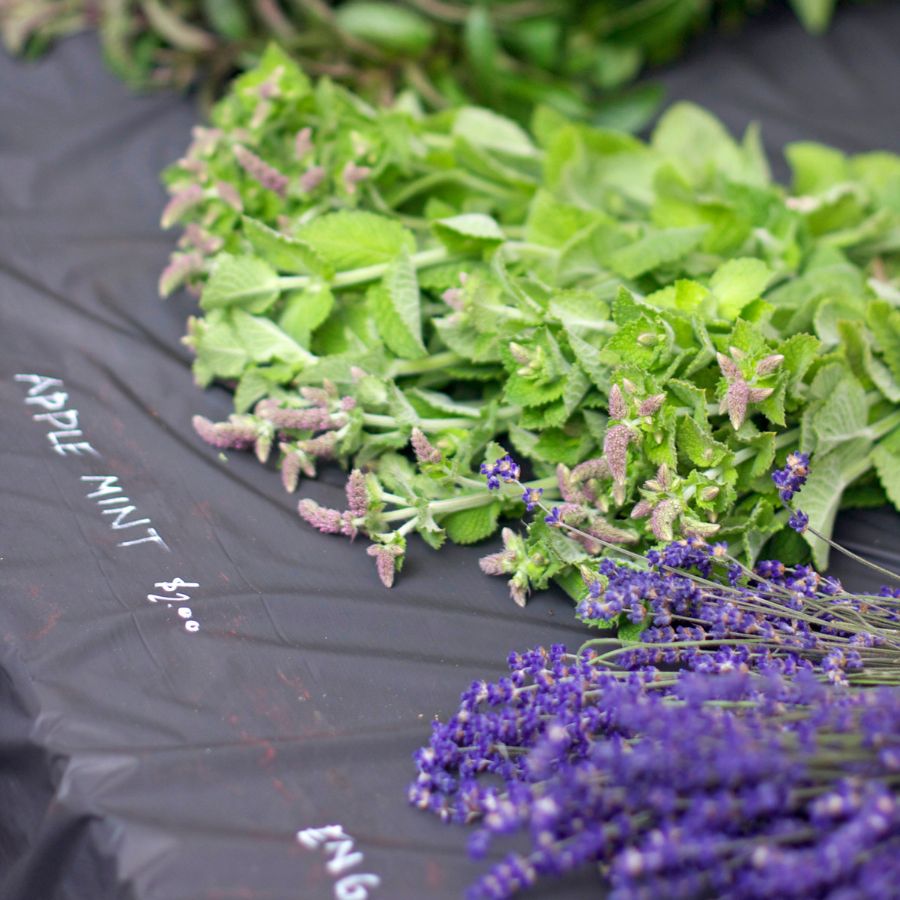
A rare plant isn’t valuable if nobody wants to buy it. If you gather in-demand species like wild ramps or black trumpets, you’re more likely to make a profit. Pay attention to what chefs, herbalists, or vendors are actually looking for.
Foraging with no plan leads to wasted effort and unsold stock. Keeping up with demand helps you bring home a profit instead of a pile of leftovers.
You can also brush up on foraging for survival strategies to identify the most versatile and useful wild foods.
Before you head out
Before embarking on any foraging activities, it is essential to understand and follow local laws and guidelines. Always confirm that you have permission to access any land and obtain permission from landowners if you are foraging on private property. Trespassing or foraging without permission is illegal and disrespectful.
For public lands, familiarize yourself with the foraging regulations, as some areas may restrict or prohibit the collection of mushrooms or other wild foods. These regulations and laws are frequently changing so always verify them before heading out to hunt. What we have listed below may be out of date and inaccurate as a result.
The Most Valuable Forageables in the State
Some of the most sought-after wild plants and fungi here can be surprisingly valuable. Whether you’re foraging for profit or personal use, these are the ones worth paying attention to:
Groundnut (Apios americana)

Groundnut grows as a vining plant with compound leaves and reddish-purple flowers, but the part you’re after is buried underground. Its tubers are edible, protein-rich, and surprisingly high in calories compared to most wild plants.
They can be peeled and boiled like potatoes, or slow-roasted to bring out a nutty, slightly sweet taste. Some people mash them or slice them thin to fry into chips.
It’s easy to confuse groundnut with trailing wild beans or other legumes, especially if you’re only looking at the vines. The key difference is the string of bead-like tubers that groundnut sends down into the soil.
These tubers have drawn attention from permaculture growers and chefs for their nutritional value and earthy flavor. While not mass-produced, they can sell for over $15 per pound in niche food markets.
Maypop (Passiflora incarnata)
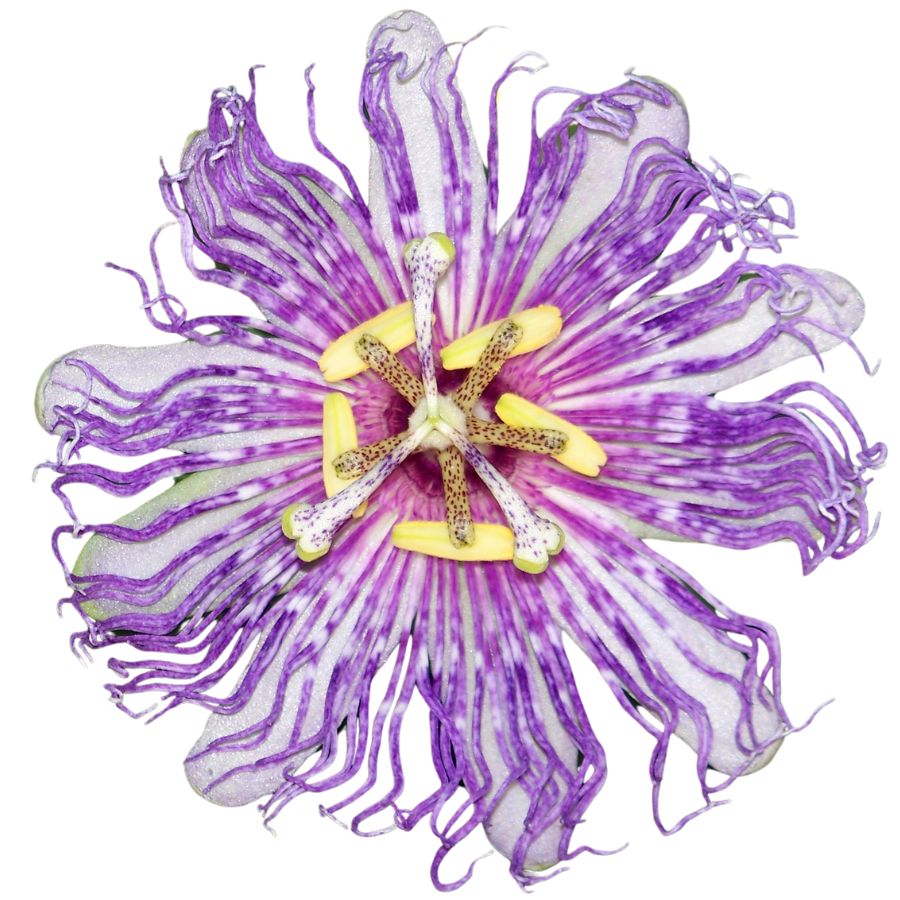
The maypop is a fast-growing vine with climbing tendrils, lobed leaves, and large purple-and-white flowers that turn into egg-shaped fruits. The fruit is the edible part, filled with a soft, pulpy interior that’s sweet, tart, and packed with crunchy black seeds.
People often eat the pulp raw or strain it into drinks, jellies, or syrups for its tropical flavor and smooth texture. It’s important not to eat the outer rind or the green, unripe fruit, which can cause digestive issues.
Maypop is sometimes mistaken for other passionflowers that don’t produce edible fruit, but the edible type has a round, wrinkly skin when ripe and a strong fruity scent. The leaves and roots aren’t used for food and shouldn’t be consumed.
Fresh maypops can sell for a few dollars each at specialty markets, especially in areas where they aren’t widely cultivated. Because the fruit doesn’t store well, its value comes from freshness and the effort it takes to collect it before it spoils.
Elderberry (Sambucus nigra subsp. canadensis)
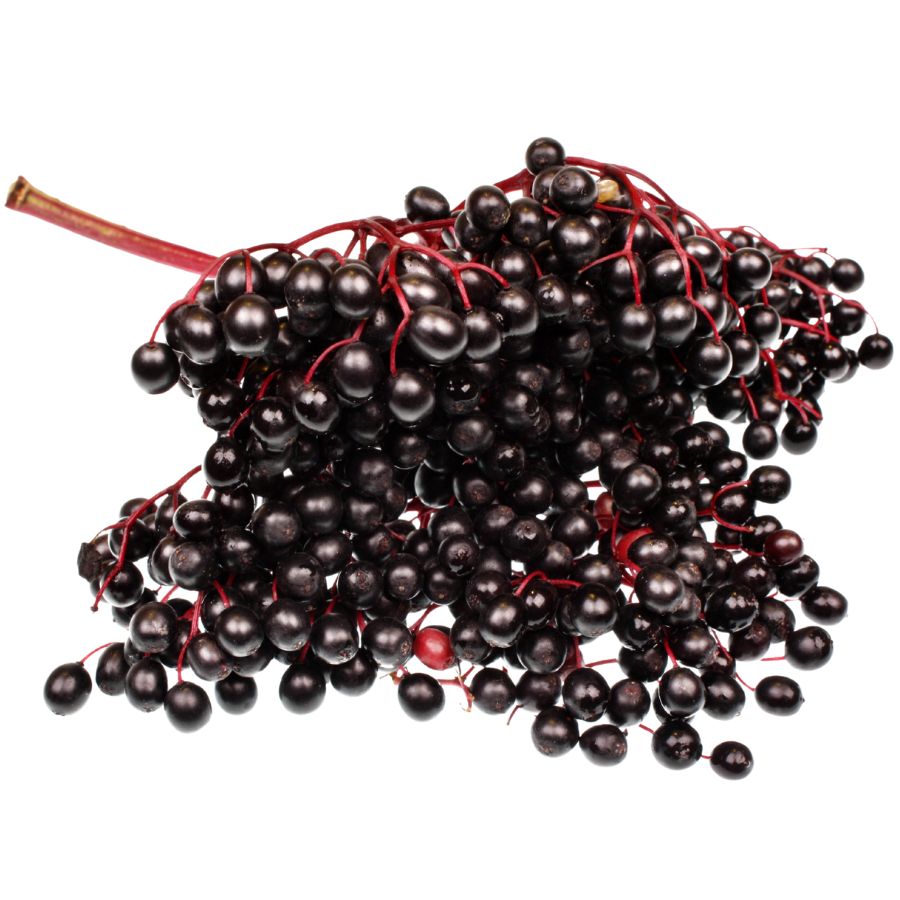
For centuries, elderberries has been gathered not just for food, but for making home remedies prized across the Southwest. Also called Mexican elder and tapiro, elderberry grows as a sprawling bush or small tree with clusters of tiny white flowers that turn into dusty blue-black berries.
There are toxic lookalikes you need to watch for, especially red elderberry, which has round clusters of bright red fruit. Elderberries grow in flatter, broader clusters and have a softer, more powdery appearance when ripe.
The berries have a deep, earthy flavor with a tart edge, and are usually cooked into jams, syrups, and baked goods to bring out their richness.
Make sure to avoid eating the raw berries, seeds, bark, or leaves because they can cause nausea unless they are properly cooked.
This plant stays valuable because the berries are used heavily in teas, tinctures, and syrups that people rely on for wellness, driving steady demand. Elderberries can also be dried and stored for months, making it even more profitable compared to foods that spoil quickly.
Watercress (Nasturtium officinale)
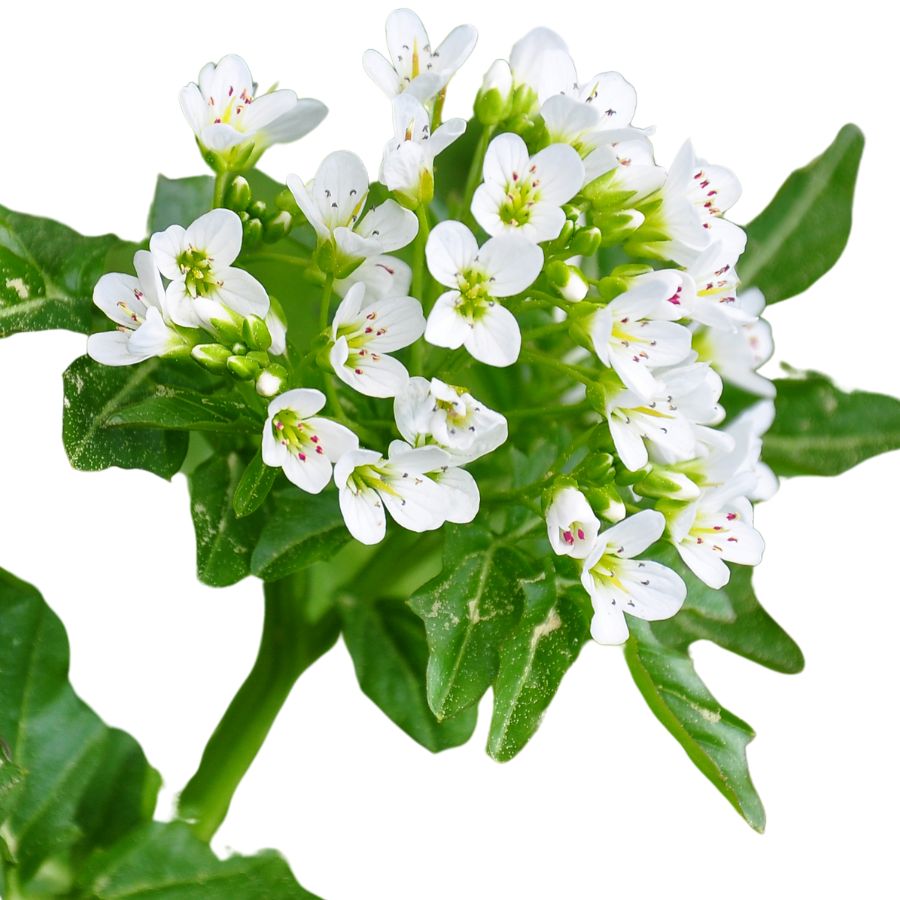
You’ll find watercress in slow-moving creeks and see it trailing along the water’s surface with clusters of tiny white blossoms. The leaves are edible and deliver a clean, peppery taste that works well fresh or tossed into stir-fries.
It’s important to watch out for lookalikes like fool’s watercress, which lacks the spicy bite and can be toxic. True watercress has a distinctive aroma and a watery, hollow stem that snaps easily.
People usually eat the leaves and stems, while the roots stay in the streambed. Watercress is packed with nutrients and adds a pleasant kick to meals without overpowering them.
Watercress is considered a premium leafy green and doesn’t keep long after harvesting, which drives up its market price. It’s not uncommon to see it featured in gourmet dishes or sold in farmers markets by the bunch.
Jerusalem Artichoke (Helianthus tuberosus)
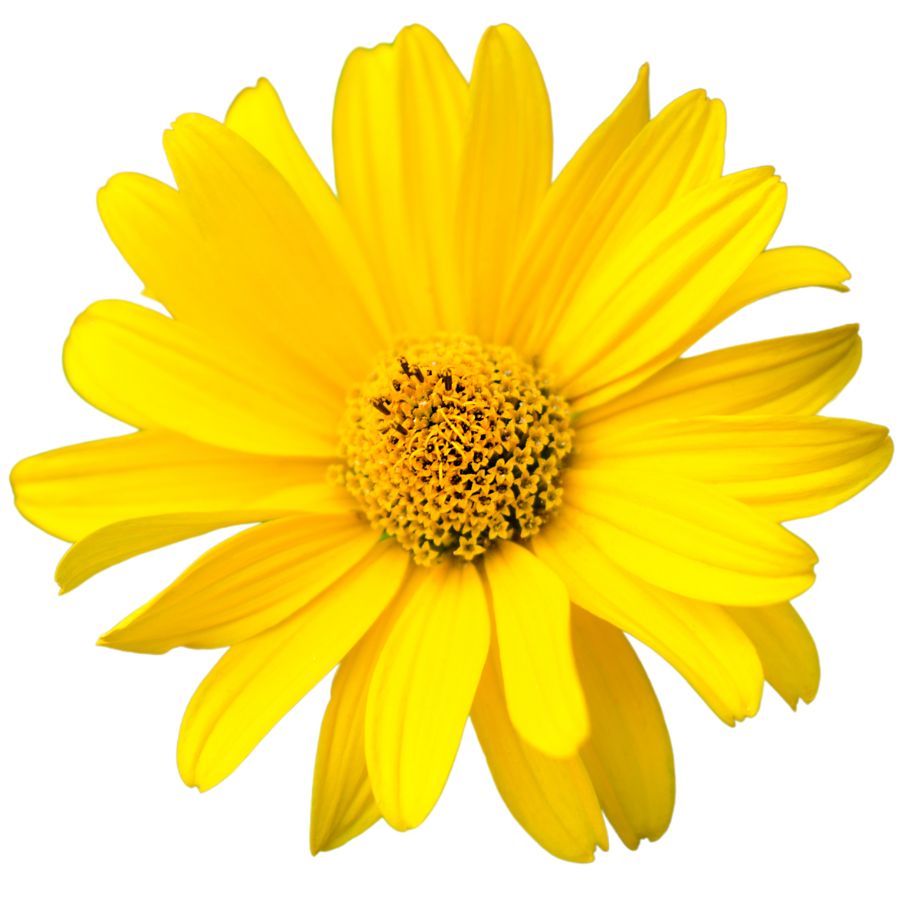
The Jerusalem artichoke is a sunflower relative that grows tall with bright yellow blooms and knobby, potato-like tubers underground. Its underground part is what you eat, while the stems, leaves, and flowers are best left alone.
What makes the tubers interesting is their crisp texture when raw and a nutty, slightly sweet flavor when cooked. They’re often roasted, pureed into soups, or sliced thin for chips.
Some wild sunflowers can look similar, but they don’t form the same type of tubers. If you’re not digging up a bumpy, tan root shaped like ginger, you’re not looking at the right plant.
People value Jerusalem artichokes for their culinary versatility and as a low-starch alternative to potatoes. They sell for a decent price at specialty grocers and farmers markets, especially when freshly dug.
American Lotus (Nelumbo lutea)

With its creamy yellow blooms and broad, water-floating leaves, the American lotus grows in ponds and still waterways across much of the country. It can look like a water lily at first glance, but the seed head and flower color are distinct.
People gather American lotus seeds and tubers for food, and both are versatile once cleaned and prepared. The seeds can be eaten raw when tender, or dried and boiled into a porridge, while the tubers work well in soups and stir-fries.
Older seeds become hard and are sometimes cracked open and roasted for a nutty snack. The inner stems can also be eaten, though they’re not as commonly harvested as the other parts.
Avoid confusing it with white water lilies, which have different flower structures and don’t produce edible tubers. The edible parts of American lotus are valuable not just for their nutrition but also because they store well, travel well, and are used in specialty food markets.
Persimmon (Diospyros virginiana)
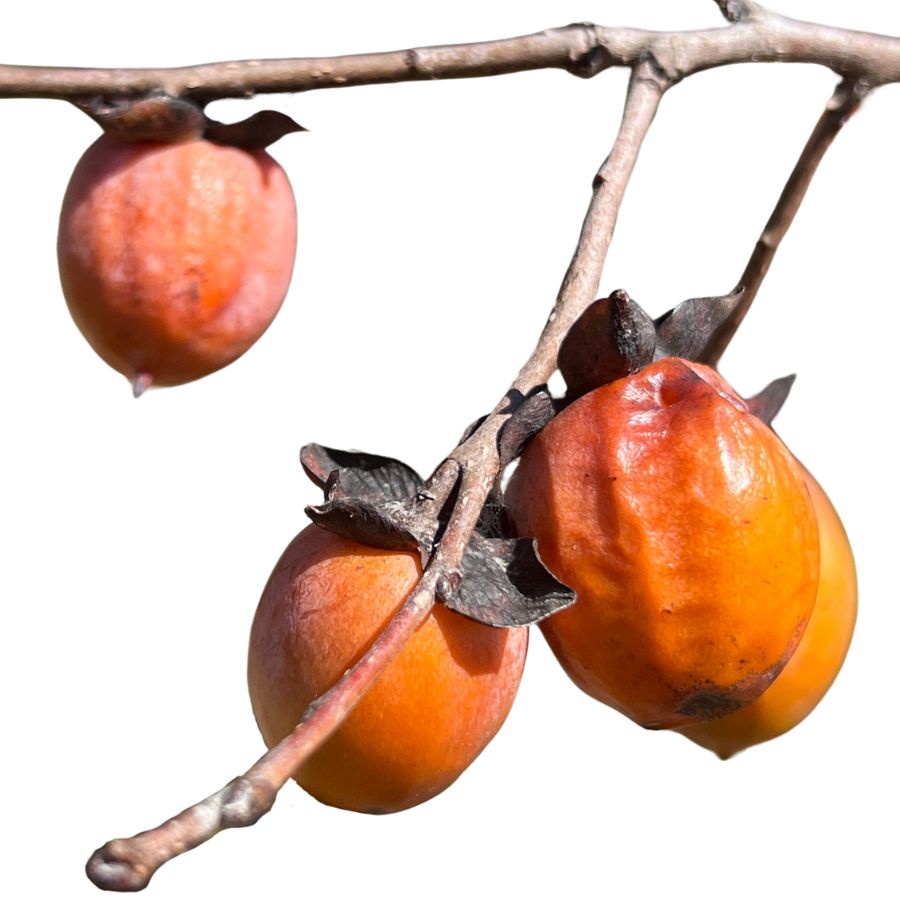
Persimmon fruit has a round shape and orange skin, usually with a slightly pointed end and a leafy cap still attached. It’s easy to bite into a ripe one and find it meltingly soft, with a flavor that’s both sugary and floral.
People sometimes confuse it with wild tomato-like fruits, but persimmons grow on hardwood trees and the fruit has a firmer skin. Avoid eating them when firm and unripe, as they contain tannins that cause a strong puckering sensation.
The pulp is the part most commonly used, and it’s great in baked goods or even frozen into a simple sorbet. Some cooks mash it into jam or dehydrate slices for a chewy snack.
Wild persimmons are valuable more for their flavor than for any consistent market price, though foragers and specialty sellers often get a few dollars per pound. The rich taste and the tree’s ability to grow in various soils make this fruit worth the effort to find.
Chickasaw Plum (Prunus angustifolia)

The Chickasaw plum, also called sand plum or mountain cherry, grows as a thicket-forming shrub with slender, thorny branches and small white flowers. Its fruits are small, reddish plums that can be tart when underripe but turn sweet and soft as they mature.
You can eat the fruits raw when they’re fully ripe, but they’re often made into jelly, preserves, or wine because of their tart skin and juicy flesh. The skin is thin and slightly astringent, while the inside has a rich, sweet flavor.
Only the flesh of the Chickasaw plum is eaten, and the seed should be discarded.
Be careful not to confuse Chickasaw plum with certain wild cherries or other stone fruits that might grow nearby but don’t produce edible or palatable fruit.
This plant is popular with foragers and small producers because of its high pectin content and bold flavor, making it valuable for preserves and specialty products. Prices vary, but processed products like Chickasaw plum jelly can bring in a decent premium at markets.
Wild Garlic (Allium vineale)
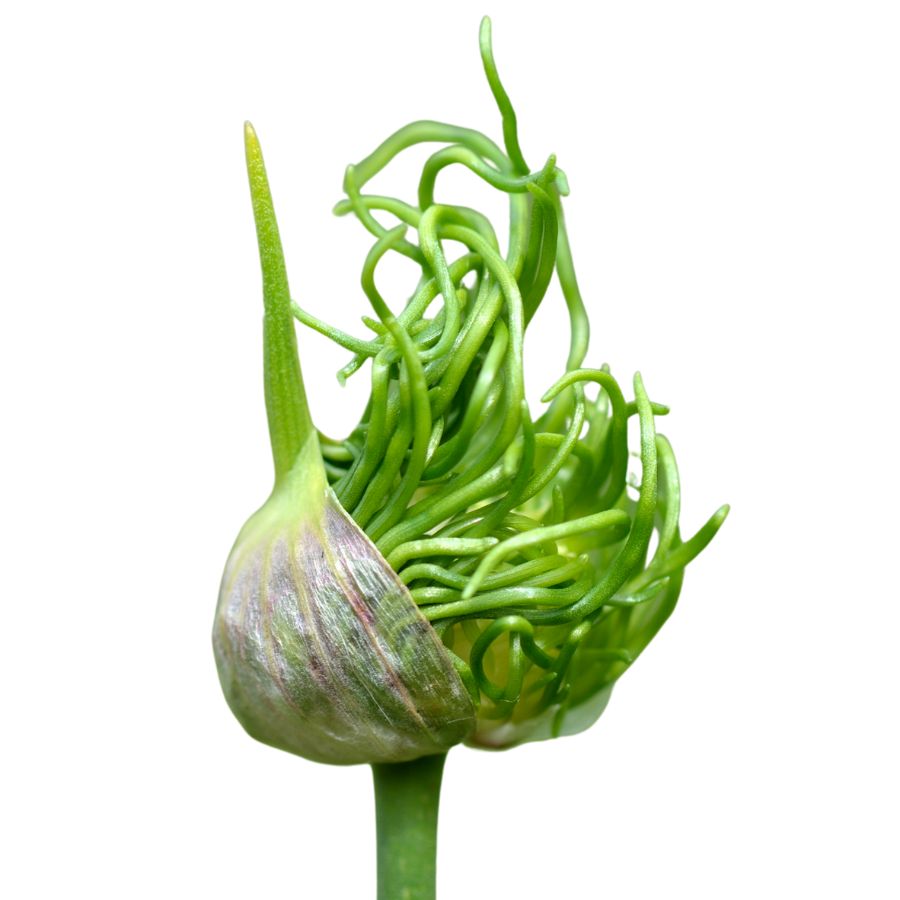
When you come across wild garlic, you’ll notice it by its slender, hollow leaves and the strong onion-like scent it gives off when crushed. Its bulbs and leaves are edible, with a flavor that’s sharper than cultivated garlic.
One important thing to watch out for is the resemblance to some toxic lookalikes, like death camas, which lacks the distinctive garlic smell. Always crush a leaf before collecting to check for that unmistakable odor.
In the kitchen, wild garlic is often used fresh in pestos or sautés, and the bulbs can be pickled or roasted. The leaves have a tender texture and a pungent bite, making them useful in any dish that benefits from a punch of garlic flavor.
Wild garlic has limited market value because it’s considered invasive in many regions. Still, it holds practical value for foragers who want a fresh, wild seasoning right from the ground.
Greenbrier (Smilax spp.)
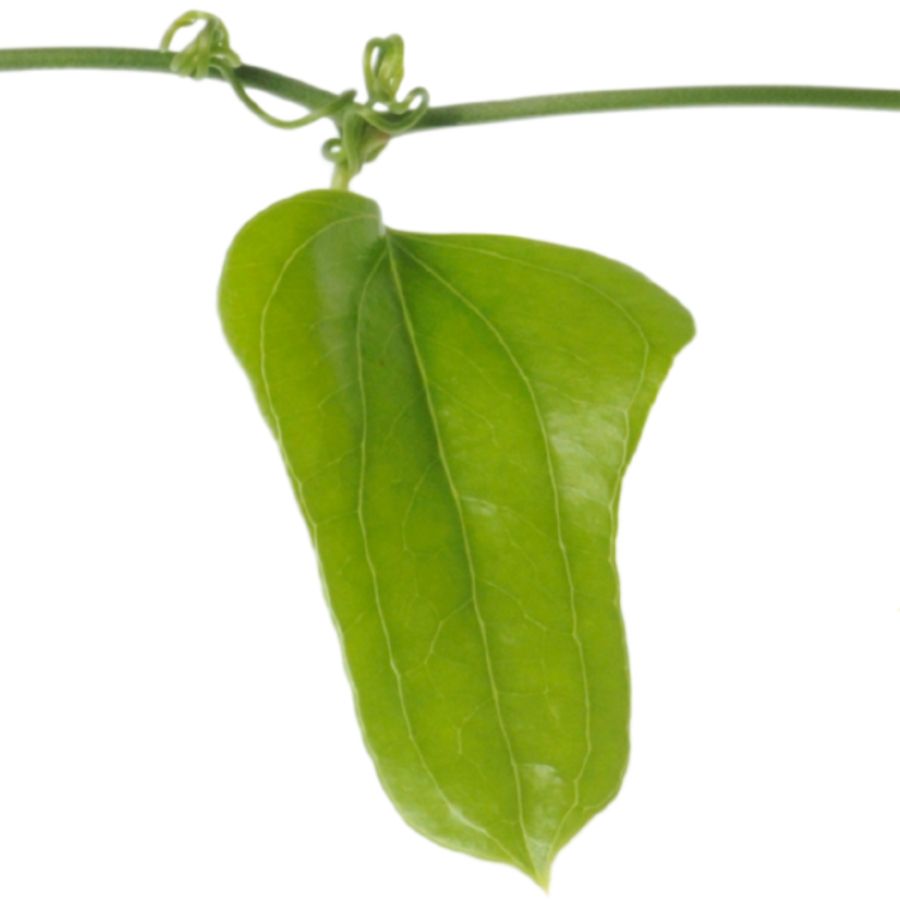
Greenbrier vines, also called catbriers or briar vines, grow thick in wooded areas and produce edible green shoots that resemble slender asparagus. These climbing plants often have tendrils and spiny stems, with shiny leaves and dark berries.
The young tips are the edible prize, offering a crisp bite and a pleasant, slightly nutty flavor when cooked. While the roots contain starch that can be used as a thickener, they’re not as commonly gathered due to the labor involved.
The shoots are typically sautéed or added to soups, and their texture holds up well to light cooking. Unlike the shoots, the berries aren’t considered valuable for food, and older stems grow too tough to eat.
Some thorny vines like greenbrier have similar features to non-edible plants, but the distinctive leaf shape and vine structure help keep things straight. Foragers who know what they’re doing can get a good haul, and fresh shoots can fetch a few dollars per bundle at specialty markets.
Blackberry (Rubus spp.)
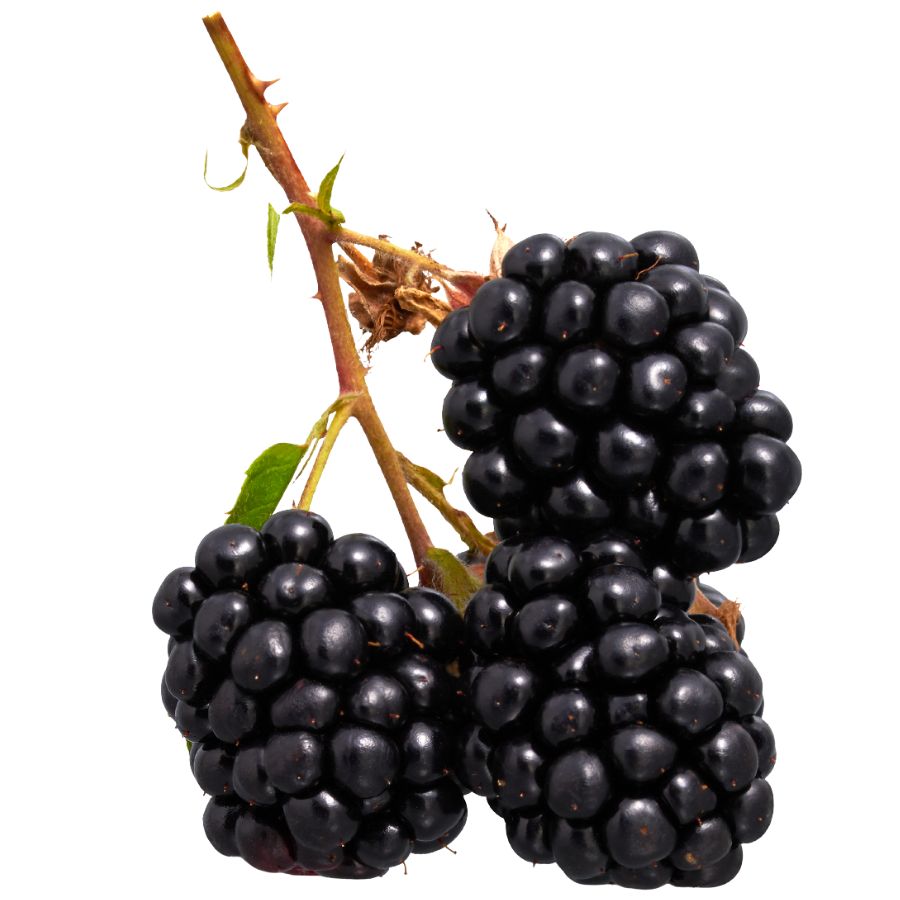
Blackberries grow on arching canes with hooked thorns and have five-petaled white flowers that appear before the fruit. They’re often mistaken for dewberries, but dewberries ripen earlier and usually sit closer to the ground.
Only the fruit is considered edible, and it’s commonly used in pies, jellies, wines, or eaten by the handful. The taste is rich, sweet, and slightly tangy, with a satisfying soft pop when you bite into a ripe one.
Some foragers also use young leaves in teas, but they’re not eaten as food. Be careful when gathering, since the brambles can be dense and the thorns are sharp.
Blackberries are valuable in both local markets and home kitchens because of their versatility and flavor. Depending on the region and demand, foraged blackberries can fetch a decent price, especially when sold fresh.
Lamb’s Quarters (Chenopodium album)
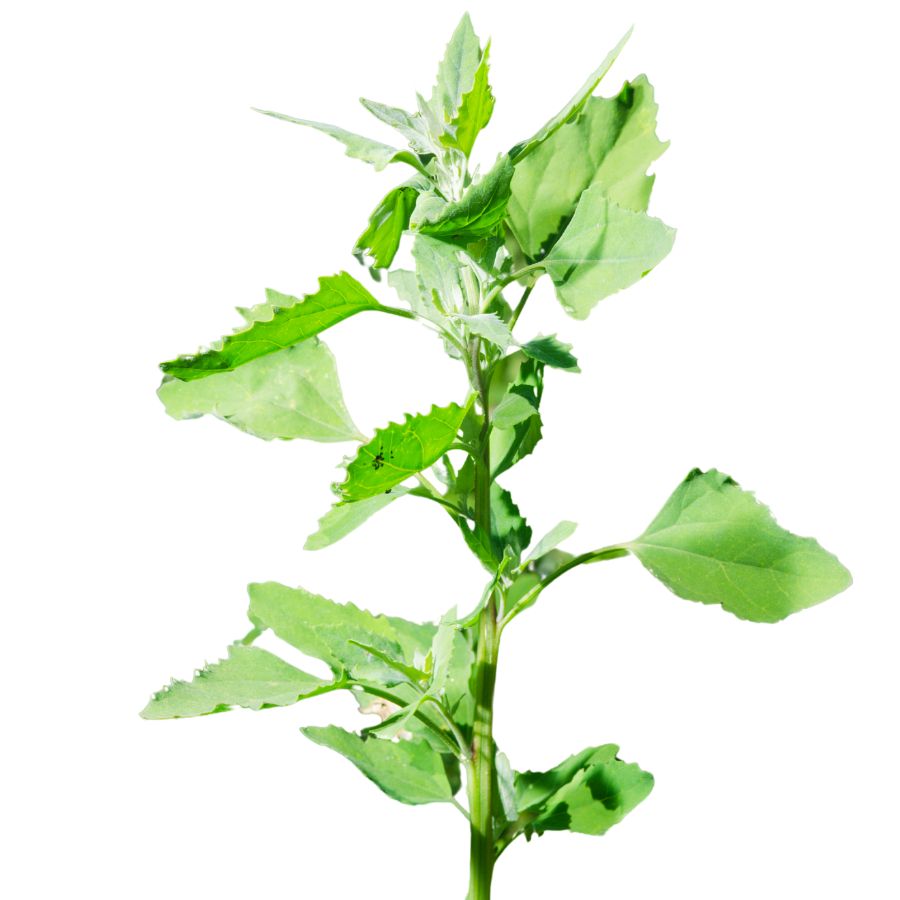
Lamb’s quarters, or wild spinach, is a common backyard plant with diamond-shaped leaves that often look like they’ve been dusted with flour. That powdery texture is one of the simplest ways to tell it apart from toxic plants that have smoother or glossier leaves.
The younger leaves have a mild taste and soft texture, making them popular in stir-fries and pestos. Most people harvest the leaves and tender tops, but the tiny seeds are also usable if properly prepared.
Some plants that resemble lamb’s quarters, like young pokeweed, are not safe to eat and have very different stem coloration. Lamb’s quarters typically has green to purplish stems and no berries.
Because of how nutritious and versatile it is, the plant has been gathered for centuries across many cultures. It’s not a high-ticket item, but it does show up in specialty food markets and foraged meal boxes.
Daylily (Hemerocallis fulva)

The daylily is a bright orange flower with long, sword-shaped leaves that grows in clumps and sends up tall flowering stalks. It looks similar to some toxic lilies, but true daylilies have thick, fleshy roots and grow multiple flowers from a single stalk.
You can eat the buds, flowers, young shoots, and tuber-like roots, but the buds and flowers are the most commonly used. The petals have a crisp, slightly sweet flavor when raw, and they’re often stir-fried or added to soups.
Some people experience digestive issues from eating large amounts of raw daylily, so it’s best to try a small portion first. Avoid confusing it with similar-looking lilies like tiger lily or Easter lily, which are not safe to eat.
The flowers are sometimes sold dried in Asian markets and used in traditional dishes, giving them modest value in the specialty food world. Because several parts of the plant are edible and have distinct culinary uses, it’s a popular foraged food.
Goldenrod (Solidago spp.)
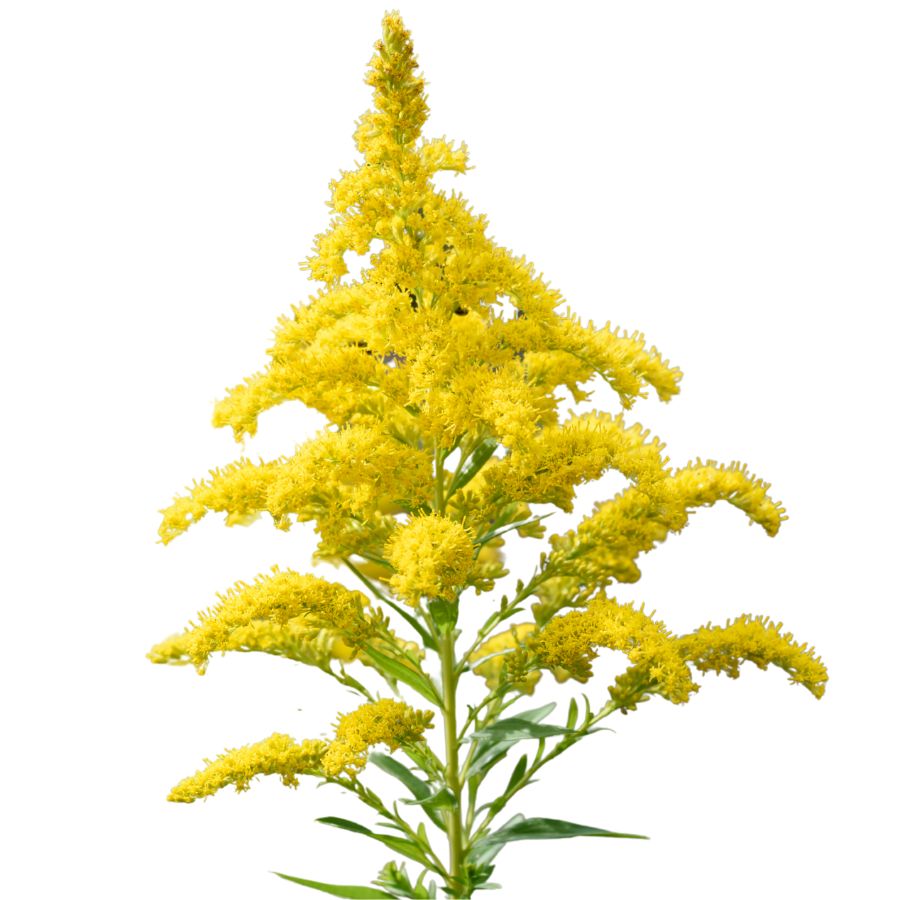
If you’ve ever noticed a cluster of tall plants with small yellow flower tufts along the stem, you were probably looking at goldenrod, also called woundwort or blue mountain tea. It has narrow lance-shaped leaves and grows in dense bunches that can easily be mistaken for ragweed, but ragweed has greenish flowers and a more feathery appearance.
The flowers and young leaves of goldenrod are edible and can be used to make tea with a mildly sweet, slightly bitter flavor and a smooth, soothing texture. Older leaves tend to be too tough and fibrous for consumption.
People usually dry the flowering tops for storage, using them later in infusions or blended with other herbs. When fresh, they can also be steeped directly, though the flavor becomes stronger and a little more bitter with age.
Goldenrod can often be sold in herbal markets in dried form for a few dollars per ounce. Its value mainly comes from how easy it is to preserve and combine with other ingredients.
Sea Purslane (Sesuvium portulacastrum)
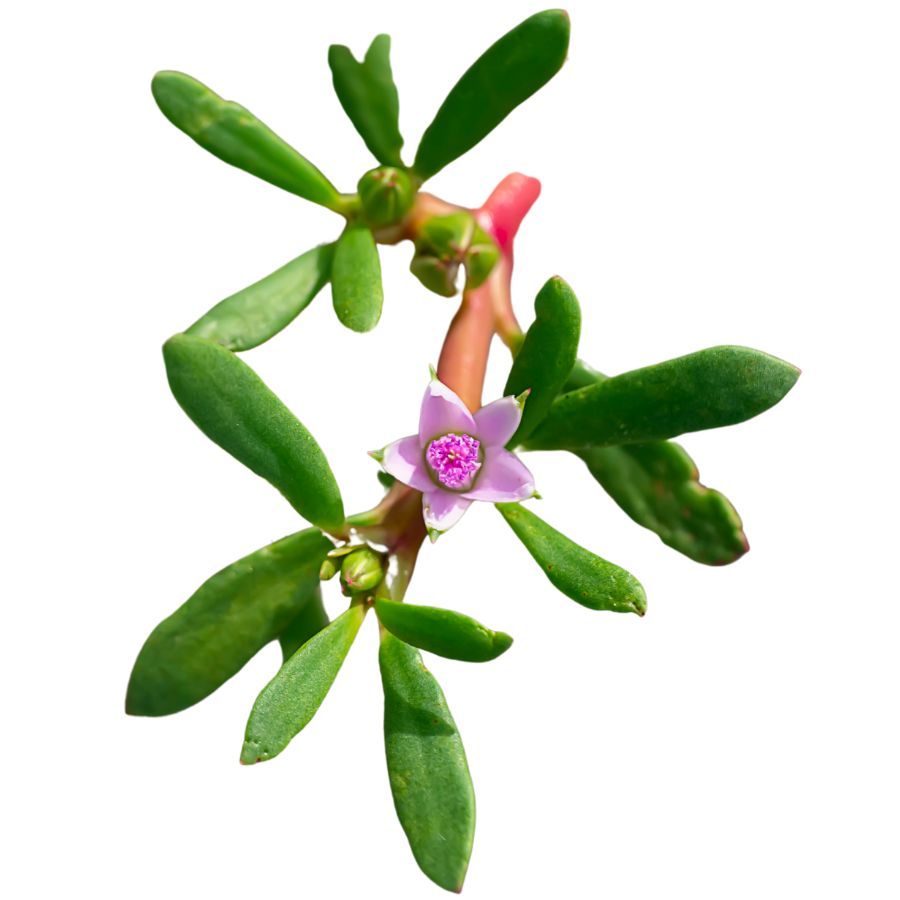
Sea purslane is a salty edible groundcover with spoon-like, glossy leaves and red-green stems. Its crunchy leaves are edible raw but are often boiled or pickled for a stronger flavor.
The taste is somewhere between spinach and seawater, and the texture stays crisp even when cooked. People often preserve it in brine or toss it with oil and vinegar as a side dish.
What sets sea purslane apart from inedible lookalikes is its habitat—it thrives in salty marshes and tidal flats where few other plants survive. The stems are just as edible as the leaves, but avoid any parts that are wilted or browned.
Because it grows in coastal zones without needing fresh water, sea purslane is gaining interest as a sustainable food source. Though not sold widely, it fetches a good price at niche farmers markets and specialty restaurants.
Spanish Needles (Bidens alba)
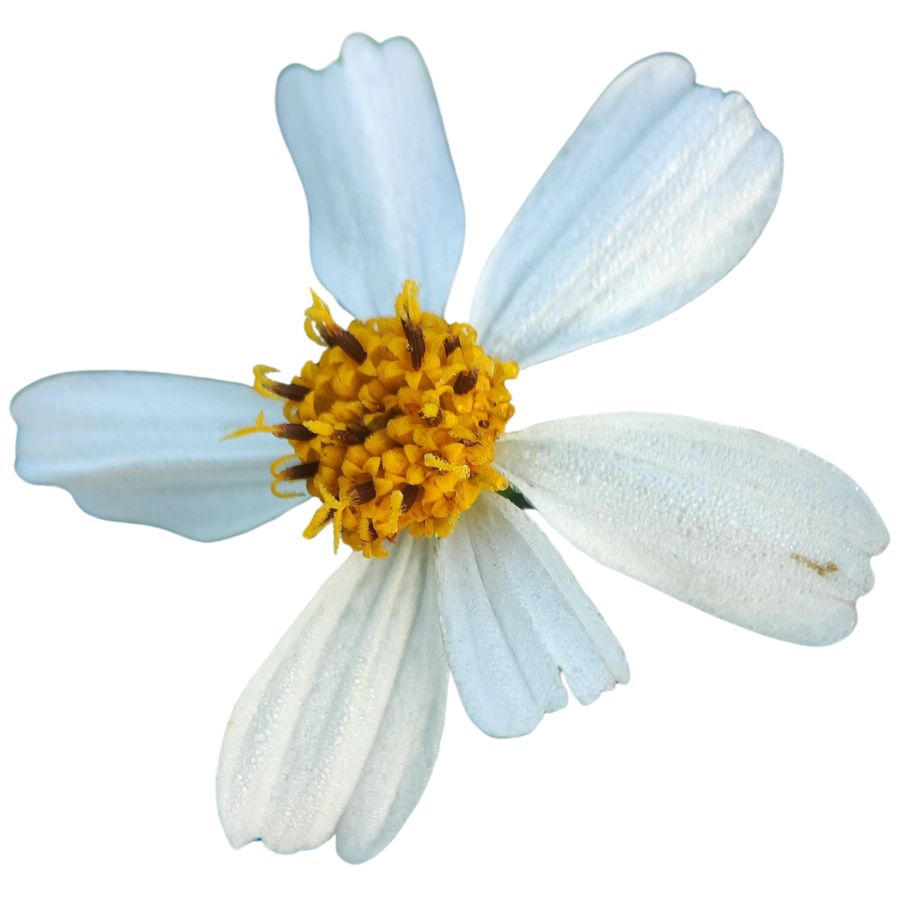
Spanish needles, often called shepherd’s needles, grow upright with lacy leaves and small white-petaled flowers that have a yellow center. The seeds are long, dark, and stick easily to clothing and fur.
You can eat the young leaves, which are slightly bitter and often compared to spinach in taste and texture. People usually boil them or toss them into soups and stir-fries.
The flowers and tender stems are also edible, though the leaves are the most commonly used part. Avoid older leaves since they get tough and more bitter.
This plant is abundant and not very commercially valuable, but it’s nutritionally dense and highly useful if you’re foraging. It doesn’t have any toxic lookalikes, though it can be confused with certain related species.
Where to Find Valuable Forageables in the State
Some parts of the state are better than others when it comes to finding valuable wild plants and mushrooms. Here are the different places where you’re most likely to have luck:
| Plant | Locations |
| Groundnut (Apios americana) | – Big Cypress National Preserve – Caloosahatchee Creeks Preserve – Dupuis Reserve |
| Maypop (Passiflora incarnata) | – Wekiwa Springs State Park – Ocala National Forest – Paynes Prairie Preserve State Park |
| Elderberry (Sambucus nigra subsp. canadensis) | – Everglades National Park – Lake Apopka North Shore – Paynes Prairie Preserve State Park |
| Watercress (Nasturtium officinale) | – Wekiva Springs State Park – St. Johns River drainage ditches – Lake Apopka canals |
| Jerusalem Artichoke (Helianthus tuberosus) | – Apalachicola National Forest – Osceola National Forest – Blackwater River State Forest |
| American Lotus (Nelumbo lutea) | – Lake Okeechobee – St. Johns River – Lake Apopka |
| Persimmon (Diospyros virginiana) | – Ocala National Forest – Apalachicola National Forest – Paynes Prairie Preserve State Park |
| Chickasaw Plum (Prunus angustifolia) | – Ocala National Forest – Paynes Prairie Preserve State Park – Blackwater River State Forest |
| Wild Garlic (Allium vineale) | – Gainesville area woodlands – Tallahassee area fields – Jacksonville area meadows |
| Greenbrier (Smilax spp.) | – Lake Monroe area near Sanford – Ocala National Forest – Wekiwa Springs State Park |
| Blackberry (Rubus spp.) | – Gainesville area woodlands – Ocala National Forest – Apalachicola National Forest |
| Dewberry (Rubus trivialis) | – Gainesville area fields – Ocala National Forest – Paynes Prairie Preserve State Park |
| Lamb’s Quarters (Chenopodium album) | – Fields east of Everglades National Park – Ocala National Forest – Apalachicola National Forest |
| Daylily (Hemerocallis fulva) | – Gainesville area gardens – Tallahassee area landscapes – Jacksonville area parks |
| Goldenrod (Solidago spp.) | – Ocala National Forest – Apalachicola National Forest – Paynes Prairie Preserve State Park |
| Sea Purslane (Sesuvium portulacastrum) | – Coastal areas of the Florida Keys – Cape Canaveral National Seashore – Gulf Islands National Seashore |
| Spanish Needles (Bidens alba) | – Gainesville area fields – Ocala National Forest – Apalachicola National Forest |
When to Forage for Maximum Value
Every valuable wild plant or mushroom has its season. Here’s a look at the best times for harvest:
| Plants | Valuable Parts | Best Harvest Season |
| Groundnut (Apios americana) | Tubers | October to February |
| Maypop (Passiflora incarnata) | Fruit | August to October |
| Elderberry (Sambucus nigra subsp. canadensis) | Flowers, berries | May to July (flowers), June to August (berries) |
| Watercress (Nasturtium officinale) | Leaves, stems | November to March |
| Jerusalem Artichoke (Helianthus tuberosus) | Tubers | November to February |
| American Lotus (Nelumbo lutea) | Seeds, roots | July to September (seeds), October to January (roots) |
| Persimmon (Diospyros virginiana) | Fruit | September to November |
| Chickasaw Plum (Prunus angustifolia) | Fruit | March to May |
| Wild Garlic (Allium vineale) | Bulbs, leaves | December to March |
| Greenbrier (Smilax spp.) | Young shoots, roots | February to April (shoots), October to January (roots) |
| Blackberry (Rubus spp.) | Fruit | May to July |
| Lamb’s Quarters (Chenopodium album) | Leaves, seeds | April to June (leaves), July to September (seeds) |
| Daylily (Hemerocallis fulva) | Flower buds, tubers | April to June (buds), October to January (tubers) |
| Goldenrod (Solidago spp.) | Flowers, leaves | August to October |
| Sea Purslane (Sesuvium portulacastrum) | Leaves, stems | April to November |
| Spanish Needles (Bidens alba) | Leaves, flowers | January to May |
One Final Disclaimer
The information provided in this article is for general informational and educational purposes only. Foraging for wild plants and mushrooms involves inherent risks. Some wild plants and mushrooms are toxic and can be easily mistaken for edible varieties.
Before ingesting anything, it should be identified with 100% certainty as edible by someone qualified and experienced in mushroom and plant identification, such as a professional mycologist or an expert forager. Misidentification can lead to serious illness or death.
All mushrooms and plants have the potential to cause severe adverse reactions in certain individuals, even death. If you are consuming foraged items, it is crucial to cook them thoroughly and properly and only eat a small portion to test for personal tolerance. Some people may have allergies or sensitivities to specific mushrooms and plants, even if they are considered safe for others.
Foraged items should always be fully cooked with proper instructions to ensure they are safe to eat. Many wild mushrooms and plants contain toxins and compounds that can be harmful if ingested.

